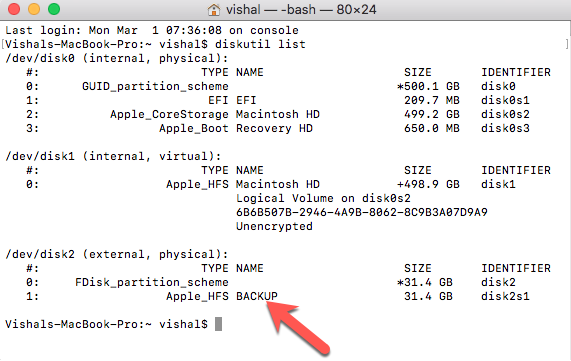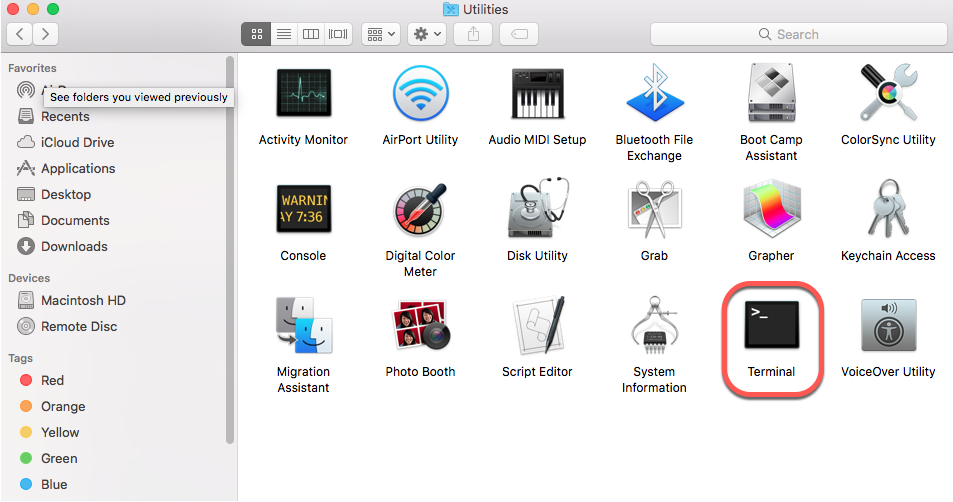

- Mac unmount disk command line how to#
- Mac unmount disk command line mac os#
- Mac unmount disk command line install#
- Mac unmount disk command line free#
- Mac unmount disk command line windows#
I've never heard anybody say that was the case, before your experience.
Mac unmount disk command line install#
I don't know why you had to use the command line interface, or Windows, to install the system. I've done that multiple times as well, as have others here on this board. Build a bootable installer external drive, replace the internal drive with a new one, boot from the external, use DU to format the new drive for the Mac, run the installer and you are done.
Mac unmount disk command line mac os#
Mac OS installers, when booted from external drives, offer Disk Utility from which to format the target of the installation. I don't know why your setup wouldn't allow formatting of the internal, once booted from an external, but DU will definitely do that, normally. I told you that in post #11.ĭU will work if you are booted from an external drive into the Recovery Panel (post #8). You finally got to format the internal drive when booted from the external drive.
Mac unmount disk command line free#
It is not that DU won't allow partitioning of free space, it is that it won't allow partitioning/erasing/formatting on the boot drive. It must be performed prior to install by the user with command line. MacOS installers do NOT offer partitioning/formatting options upon install. Command line must be used (externally).ģ. Disk Utility partitioning/formatting of the internal drive will NOT work, even from an external drive. Disk utility, unlike Windows, will NOT allow partitioning on free space from a separate partition on the same physical drive.Ģ. Finally, I wondered if formatting with Mac command line would now work because the installer was running externally on the flash drive.Doggone, it let me format.and then, doggone, it both displayed and allowed me to choose the new formatted space.DOGGONE, it let me install the thing!!ġ.
Mac unmount disk command line windows#
I tried again initially formatting with Windows formatting (ntfs) just so it would recognize the partition and hopefully redo it.but nope, same results as before.Ħ. Again, it would not recognize, offer partitioning options, or do anything with the free space, and again, partitioning options in Disk Utility were greyed out. Next, I tried installing the OS installer to a flash drive and started over with just free space on Mac HD (except for the recovery partition). When I tried to use Disk Utility to reformat it using Mac formatting, no matter what formatting I chose, it always says: Failed.not enough space on device for requested operation-which does not make sense to me.ĥ. It recognized the new partition and displayed it as the option to choose the location. I then created a partition out of the remainder of the free space, again using Windows (ntfs). Instead, it only showed the 6g partition and did nothing else.Ĥ. I then tried to run the installer on Mac to install OS on the free space, assuming it would create its own partition for the OS, or offer me some options to do so as part of the installation. The OS installer then installed ("restored") there and automatically reformated to Mac formatting. Next, I created a 6g partition for the OS installer using a Windows machine (ntfs).


I assume this means Apple, unlike Windows, cannot create partitions from free space when it is performed from a partition from the same physical drive, even though it is not affected by making more partitions, so.ģ. If I try to use Mac command line to create a partition out of free space, it always gives the error: couldn't unmount disk. When I tried to create a partition out of free space using Disk Utility, the options to do so are greyed out.Ģ. There are no other partitions because the rest is allocated as free space.Įven though I figured this out at the end, I would not have been able to do so without the clues given to me in this thread regarding the Mac command language and syntax-thank-you.ġ. It only shows the recovery partition to choose from but it is greyed out, of course, because it shouldn't be installed there. I already ran the installer and it is looking for a partition to install it on. I am trying to create a partition to install OS.
Mac unmount disk command line how to#
I can partition and format MS disks all day long, but I don't know how to do it with this. Using terminal is no risk here as there is nothing on it anyway. By "graphic options", I mean what I believe Slydude is referring to, but the Add option is greyed out. The icon in MacUtilities looks like High Sierra. According to the article, 0b does not create a zero byte partition, but instead creates a partition using all the remaining available free space, that is what I wanted, after creating a 6g partition for the installer. I tried again with zero, but received a couldn't unmount disk error. In the example line, there was no slash, so it looked like the letter.


 0 kommentar(er)
0 kommentar(er)
